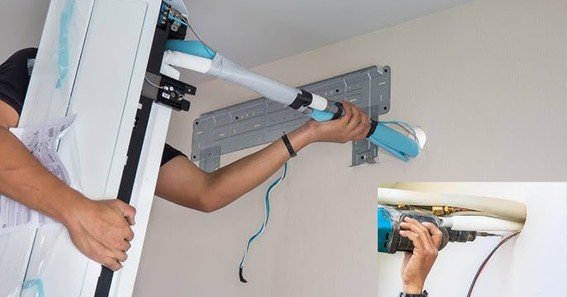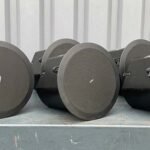In the realm of HVAC systems, AC fittings play a pivotal role in ensuring efficient and leak-free connections between components. Whether you’re a professional technician or a DIY enthusiast, understanding the different types of AC fittings and their proper installation is crucial for system performance and longevity.
Types of AC Fittings
AC fittings come in various designs, each tailored for specific applications within HVAC systems. Here’s an overview:
1. Flare Fittings
These fittings connect copper tubing to HVAC components like evaporator and condenser coils. They create a strong, leak-resistant connection through a threaded interface.
2. Soldered and Brazed Fittings
Used to connect copper tubing, soldered fittings involve a lower-temperature process, while brazed fittings require higher temperatures for a stronger joint. Both are common in refrigerant lines.
3. Compression Fittings
Designed for easy installation without special tools, these fittings use a threaded nut and ferrule to compress onto the tubing, ensuring a secure, leak-proof connection.
4. Union Fittings
Comprising two halves that can be easily connected and disconnected, union fittings are ideal for systems requiring occasional disassembly for maintenance or repairs.
5. Schrader Valves
Similar to those found in bicycle tires, Schrader valves control refrigerant flow and are typically located on service valves and access ports.
6. Quick-Connect Fittings
These allow rapid connection and disconnection without tools, featuring a spring-loaded mechanism that securely locks components in place, simplifying maintenance tasks.
Applications of AC Fittings
AC fittings are integral to various parts of HVAC systems:
- Refrigerant Lines: Connecting evaporator and condenser coils, service valves, and other components to maintain a sealed system for refrigerant circulation.
- Condensing Units: Linking the condensing unit to the evaporator coil, ensuring effective refrigerant flow and heat exchange.
- Air Handlers: Connecting coils, blower motors, and other components for efficient heat exchange and air circulation.
- Ductless Mini-Split Systems: Joining indoor and outdoor units to facilitate refrigerant flow for heating and cooling.
- Heat Pumps and Central AC Systems: Connecting compressors, evaporator coils, and condenser coils to ensure proper refrigerant flow and efficient heat exchange.
Installation Tips for AC Fittings
Proper installation is vital for system efficiency and safety:
- Select Appropriate Fittings: Ensure compatibility with tubing diameter and refrigerant type.
- Prepare Tubing Ends: Clean and deburr tubing ends to prevent damage to seals and ensure a tight fit.
- Follow Manufacturer Guidelines: Adhere to specified torque values and installation procedures to avoid leaks and component damage.
- Use Proper Tools: Employ the correct tools for cutting, flaring, or compressing fittings to maintain integrity.
- Test for Leaks: After installation, conduct pressure tests to verify the integrity of connections.
FAQ
Q1: What is the difference between flare and compression fittings?
A: Flare fittings require flaring the tubing end and provide a threaded connection, while compression fittings use a ferrule and nut to compress onto the tubing without flaring.
Q2: Can I mix different types of fittings in one system?
A: It’s advisable to use consistent fitting types to ensure compatibility and prevent leaks. Mixing may lead to connection issues.
Q3: How do I know which fitting size to use?
A: Refer to the HVAC system’s specifications and match the fitting size to the tubing diameter and thread type required.
Q4: Are quick-connect fittings reliable for long-term use?
A: Yes, when properly installed, quick-connect fittings provide secure, leak-free connections suitable for long-term applications.
Q5: Do I need special tools for installing AC fittings?
A: Some fittings, like compression types, require minimal tools, while others, like flare or brazed fittings, need specific tools for proper installation.
Understanding and correctly installing AC fittings is essential for the optimal performance and safety of HVAC systems. By selecting the appropriate fittings and following proper installation procedures, you can ensure efficient operation and longevity of your air conditioning system.










